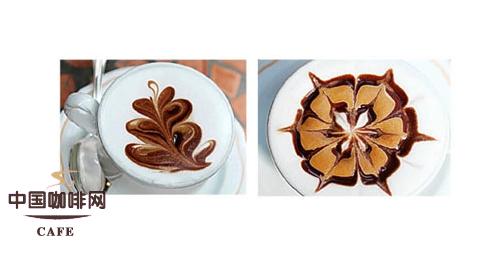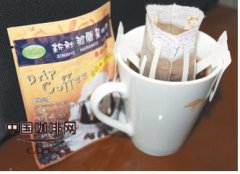Introduce several fancy coffee Irish liqueur coffee Irish Mist Coffee

1. Irish coffee
Irish Coffee
(Ireland)
Slightly deep-cultivated coffee 150cc
Irish Whiskey 20cc
White granulated sugar 10g
Stir cream or whipped cream 20cc
Iron the cup, wipe the cup clean, put sugar in it, Irish Whiskey, pour in the coffee, and gently float the whipped cream over it (be careful not to stir with a teaspoon when using whipped cream).
It is said that fishermen who return from fishing often drink this kind of coffee to ward off the cold, warm their cold bodies, and then embark on their way home. Later, it became famous around the world for its popularity in the coffee shop in San Francisco.
2. Irish liqueur coffee
Irish Mist Coffee
(Ireland)
Slightly deep-cultivated coffee 150cc
Irish liqueur 20cc
White granulated sugar 10g
Stir cream 20cc
After the cup is hot, add sugar and Irish liqueur, pour in the coffee, then gently float the whipped cream on top, be careful not to stir.
Irish liqueur is a coffee wine made from Irish whisky, honey and vanilla. The combination of coffee, cream and liqueur is so delicious that it is fascinating.
3. Driver's coffee
Einspanner
(Austria)
Deep-baked coffee 120cc
Stir cream 20cc
You can sprinkle some sugar as needed.
Pour coffee into the cup and float the whipped cream over it. The Viennese way to serve the table is to use a tray with a coaster on top and the coffee cup on the coaster. At the same time, put a sugar cup on the tray and a teaspoon on the cup.
As the name implies, "driver's Coffee" is "Carriage driver's Coffee". It is said that in the past, the imperial hands gathered together and often drank this kind of coffee, and then it was widely used. The Japanese-style "Viennese coffee" usually uses a cup with a handle.
4. Xishen coffee
Ambrosia Coffee
(United States)
Slightly deep-cultivated coffee 150cc
Italian liqueur 10cc
Brandy 10cc
A little powdered ginger
Brandy (for combustion) 20cc
A piece of sugar cube
Deluxe spoons should be used
Pour coffee, liqueur and brandy into the cup and sprinkle with powdered ginger. Brandy and teaspoons. Put the teaspoon on top of the cup, put a cube of sugar on top, put in the hot brandy, then light the fire. After the fire is out, stir gently with the top teaspoon.
Hope that God means "immortality", the taste of this coffee is more mellow than "luxury coffee".
5. Vasik Coffee
Huasteco
(Mexico)
Deep-baked coffee 75cc
Foamed milk 75cc
Pomegranate juice 10cc
Green mint wine 20cc
Pour pomegranate juice and green mint wine into the cup, put in the stirred milk foam, press the teaspoon against the edge of the cup, and slowly pour the coffee on top of the foam to form a layer between the milk and coffee.
Seen from the side of the cup, it is very similar to the color of the Mexican flag, with four distinct levels of red, green, white and brown. In addition, Vasik also has the meaning of "Aztec".
6. Fennel liqueur coffee
Cafe Anisette
(United States)
Deep-baked coffee 100cc
Fennel liqueur 20cc
Stir cream 20cc
Pour fennel liqueur into the cup, pour in the coffee and cover with stirred cream.
Drinks for American dinners. Fennel liqueur, also known as white vermouth, is a liqueur, drinking after a meal is conducive to digestion.
7. Arabica coffee
Cafe a la Jet Set
(France)
Deep-baked coffee 75cc
Jundu wine 20cc
Stir cream 20cc
Orange peel
Pour the Jundo wine into the cup, pour in the coffee, cover with stirred cream and put a few slices of orange peel on top.
It is a coffee that is often drunk in villages in the south of France. When vineyard workers finish their work and want to drink coffee or alcoholic drinks, they often choose this kind of coffee in township cafes or bars.
8. Viennese coffee (American)
Vienna Coffee (American)
Slightly deep-cultivated coffee 150cc
Stir cream 20cc
Cotton white sugar 10g
Pour the coffee into the cup, cover it with stirred cream, and finally, sprinkle with sugar.
In Vienna, Austria, there is actually no drink called Viennese Coffee, while in some countries outside Austria, coffee with whipped cream is called Viennese Coffee. This kind of coffee spread to Japan through the United States. Its official English name is "Vienna Coffee"
9. Caesar mixed coffee
Kaiser Melange
(Austria)
Deep-baked coffee 75cc
An egg yolk
Sugar 10g
Milk 20cc
Put all the ingredients in the pan and cook over a low heat while stirring with a blender. When the temperature is about 70 ℃, remove from the fire and pour into the cup.
It is said to have been loved by the Habsburg emperor Caesar. Nordic people often add rum or brandy to their coffee. in order to make the coffee mellow and delicious, the cooking time of the coffee should not be too long, because after boiling, the egg yolk will condense.
10. Arabica coffee
Cafe Arabe
(Arab countries)
Slightly deep-cultivated coffee 75cc
Sugar 10g
A little cinnamon powder
A little cardamom powder
Put sugar, cinnamon powder and cardamom powder in the cup and pour in the coffee.
This is a kind of coffee with modern flavor made by dripping. The original method should be to put coffee powder, cinnamon fragments and cardamom seeds in a special pot of copper or brass, and then pour into hot water to cook.
11. Ole Coffee
Cafe Ole!
(Mexico)
Slightly deep-cultivated coffee 75cc
Coffee liqueur 10cc
Tequila 10cc
Stir cream 20cc
One teaspoon of chocolate shavings
A cinnamon stick
Pour coffee liqueur and tequila into the cup and pour in the coffee. After stirring the cream float cover, sprinkle with chocolate crumbs. Finally, insert a cinnamon stick.
"Ole" is the cry of a bullfight. Although the English pronunciation of "Ole Coffee" is similar to the milky coffee introduced later, it is actually two completely different kinds of coffee.
12. Milk coffee
Cafe au Lait
(France)
Deep-baked coffee 200cc
Hot milk 150cc
Prepare two small pots, one for coffee and the other for milk. Serve it with a cup and a set of three pieces at the same time.
This is a typical French way of drinking, that is, instead of mixing in one container, coffee and milk are placed in separate pots. In the original sense of Milk Coffee, milk should be added to the coffee. Although it is rarely served in a pot and more in a cup of coffee, it is still consumed in the traditional way in old-fashioned cafes. In fact, in the past, in upper-class families, coffee had to be served in pots, so it can be said that this method is still used now.
13. Cocoa coffee
Cafe Cacao
(eastern European countries)
Deep-baked coffee 150cc
Cocoa liqueur 15cc
Stir cream 20cc
Pour coffee and cocoa liqueur into the cup, then float the stirred cream on top.
Cocoa liqueur is the most suitable liqueur for coffee, and coffee plus cocoa is the most common way to quote it in Europe. This kind of coffee can be both hot and cold, so it is especially favored by Eastern Europeans such as Hungary and Poland.
14. Italian liqueur coffee
Caffe Galliano
(Italy, USA)
Deep-baked coffee 100cc
Italian liqueur 20cc
Stir cream 20cc
Pour the Italian liqueur into the cup, pour in the coffee, and cover with stirred cream.
Italian liqueur is a typical sweet liqueur in Italy, which is very popular in Milan in northern Italy. It can be said that the citation of Italian liqueur mixed with coffee began in the second half of the 19th century, and the promotion of this method into a worldwide drink was attributed to Italian immigrants who emigrated to the United States. At the beginning of the 20th century, Italian liqueur coffee suddenly became a hot item in New York.
15. Rio de Janeiro coffee
Cafe Carioca
(Brazil)
Deep-baked coffee 100cc
15g sugar
Rum 15cc
Orange (cut) 1 canvas 4
Stir cream 20cc
A little orange powder
Put sugar, rum and orange slices in the cup and pour in the coffee. Cover it with whipped cream and sprinkle with orange powder (you can also use shaved orange peel instead)
Rio de Janeiro coffee is characterized by a blend of orange and cream, giving people a delicious enjoyment.
16. Kolo Coffee
Cafe Kahlua
(United States, Mexico)
Deep-bred coffee 150
Coffee liqueur (Mexican coffee liqueur) 20cc
White granulated sugar 10g
Stir cream 20cc
Put sugar in the cup, pour in the coffee wine, pour in the coffee, and gently cover the whipped cream (do not stir in the coffee).
Cold coffee is usually injected in Mexico, while hot coffee is injected in Europe and the United States.
17. Cardamom coffee ● Nordic flavor
Kaffee Cardamom Scandinavina
(Nordic countries)
Slightly deep-cultivated coffee 120cc
Cognac or other brandy 15cc
Sweet orange wine 10cc
5 cardamom
2 pieces of sugar cube
First, iron the glass, cognac and orange wine. Pour cognac and orange wine into the glass, add cardamom and sugar and light or (the room should be dark). After the alcohol is burned, the coffee is injected.
Characterized by a mellow taste of cardamom. The regular practice is to use a large pan to make a quantity of 4 or 5 people at the same time. This coffee is also known as "punch coffee of northern Europe".
Calvados Coffee
Cafe Calvados
(France)
Deep-baked coffee 75cc
Added Calvados 20cc
Put coffee in the cup and Calvados in the glass.
Calvados is actually brandy made from apples. If the Germans like to mix coffee with cherry brandy, the French (especially men) prefer to quote Calvados and coffee alternately. In Ingrid. Bergman and Charlie. In the LeMarc masterpiece "the Arc de Triomphe" co-starring Bowyer, there is a scene of drinking coffee, in which Calvados coffee is cited in the play. In bars in Paris, it is common to see people quoting Calvados coffee at the end of the day.
19. A can of coffee
Caffe Cannella
(United States)
Deep-baked coffee 200cc
1 cinnamon stick
Pour coffee into the cup and insert the cinnamon stick.
A can of coffee means to pour coffee into an empty can. Italians who emigrate to the United States often drink coffee in empty cans, which is, of course, a sign of a low standard of living. Later, after Italian immigrants migrated to the western United States, this way of citation was brought to the western border, from which a large cup with a handle was born, which is different from the birth process of beer mugs in public bars. Americans still retain the way of using cups instead of trays to serve coffee.
20. Cherry wine coffee
Kaffee Kirsch
(Germany, Austria)
Slightly deep-cultivated coffee 75cc
Cherry wine 20cc
Pour coffee in the cup and cherry wine in the small glass.
"Kirsch" means cherry in German. The official term should be "Kirschwasser", that is, cherry brandy. While drinking coffee, while drinking cherry wine, taste alternately, unique flavor. Although the wine is called cherry brandy, it actually belongs to liqueur.
21. Jinwanli Orange Brandy Coffee
Cafe Grand Marnier
(France, UK)
Deep-baked coffee 100cc
Jin Wanli orange brandy 20cc
Stir cream 20cc
Put Kim Wanli orange brandy in the cup, pour in the coffee, then cover with whipped cream.
Jin Wanli orange brandy is an orange-flavored liqueur, which is generally used in coffee in France and England. Especially when eating, it is often used as an after-dinner wine.
22. Greco-Roman coffee
Caffe Greco Romana
(Greece, Italy)
Deep-cultured coffee powder 8g
Water 100cc
A little orange peel
A little lemon peel
Orange peel jam
Use a special coffee maker
Boil a special coffee pot with coffee powder, water, orange peel and lemon peel on the fire. Immediately remove the coffee pot from the fire when it is boiled, leave it for about 1 minute, then pour into the cup and pour with orange peel jam.
This is Greek coffee with Roman flavor. Greeks or Turks usually drink coffee with fruit. Italy, along the Mediterranean coast, has the same habit.
23. Milk coffee
Cafe Creme (grand tasse)
(France)
Deep-baked coffee 150cc
Foamed milk 80cc
Pour coffee into the cup and pour in foamy milk
A typical French citation method. In recent years, milk coffee has been rare, replaced by cream coffee. Foaming milk with a cream blender is easy to use and its state is creamy. If you order milk coffee, the waiter provides this kind of coffee.
24. Milk coffee (small cup)
Cafe Creme (petit tasse)
(France)
Deep-baked coffee 75cc
Foamed milk 40cc
Pour coffee into the cup and pour in foamy milk.
It is the most popular coffee for women in French bars. Because this kind of coffee is very small, cheap and soft in taste. In French, although its name used to be slightly different from what it is now, and some cafes have other expressions, they all mean small cups of coffee.
25. Halo coffee
Cafe Gloria
(France, USA)
Slightly deep-cultivated coffee 100cc
Brandy 20cc
Sugar cube 1
A little orange peel
Warm the glass, then put in the sugar and orange peel, pour in the hot brandy and light the fire. When the light blue flame burns, pour the coffee in.
This is a simple way to quote luxury coffee. Suitable for occasions with a small amount of quotes after a meal.
26. Jundo Coffee
Cafe Cointreau
(France)
Deep-baked coffee 100cc
Jundu wine 20cc
Stir cream 20cc
Pour coffee and Jundu into the cup, then cover with whipped cream.
Jundu is a French liqueur, which is a kind of white orange wine. In the Ange region of western France, where this wine is brewed, it is used to being mixed in coffee. This kind of coffee is mainly served in bars around Montparnasse in Paris.
Important Notice :
前街咖啡 FrontStreet Coffee has moved to new addredd:
FrontStreet Coffee Address: 315,Donghua East Road,GuangZhou
Tel:020 38364473
- Prev

The representative common sense of fancy coffee and Italian coffee
The timeless classic latte is a classic blend of Italian espresso and milk. Italians also like lattes as breakfast drinks. In the Italian kitchen in the morning, coffee and milk are usually brewed on the sunlit stove. Italians who drink lattes do not so much like espresso as milk.
- Next

Nalando Coffee, which is rich and not sour.
The Lando coffee is a follicular black coffee carry-on bag, the fragrance is not sour. Southeast net, March 31, according to Taiwan media reports, Luo Jiaiyuan, a woman in Taoyuan County who came out of the haze of bereavement, invested in promoting Nalandot coffee from her hometown New Society. She said that Nalandot coffee was planted and harvested in her hometown and was only sold locally. As soon as she was addicted to it, she had a strong aroma and would not be sour, and she had a sincere conversation with the other party.
Related
- Beginners will see the "Coffee pull flower" guide!
- What is the difference between ice blog purified milk and ordinary milk coffee?
- Why is the Philippines the largest producer of crops in Liberia?
- For coffee extraction, should the fine powder be retained?
- How does extracted espresso fill pressed powder? How much strength does it take to press the powder?
- How to make jasmine cold extract coffee? Is the jasmine + latte good?
- Will this little toy really make the coffee taste better? How does Lily Drip affect coffee extraction?
- Will the action of slapping the filter cup also affect coffee extraction?
- What's the difference between powder-to-water ratio and powder-to-liquid ratio?
- What is the Ethiopian local species? What does it have to do with Heirloom native species?

